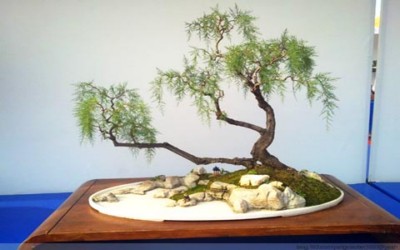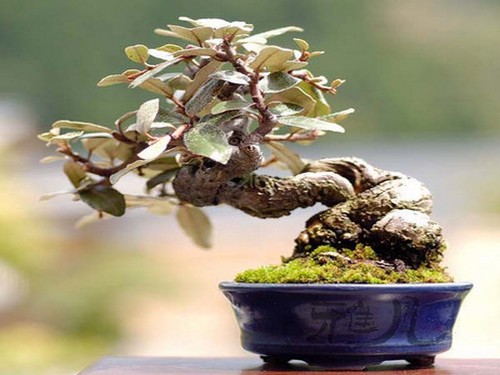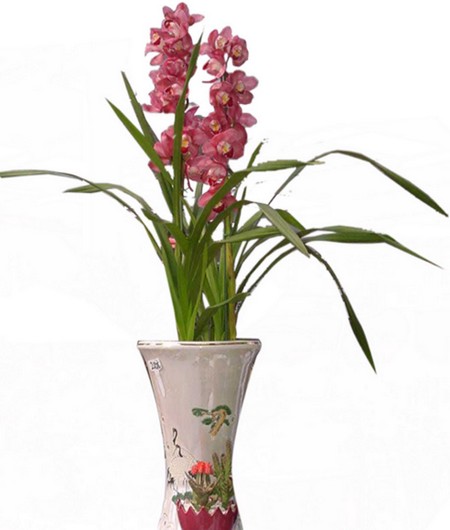Maintenance methods of strange willow bonsai
Tamarix, alias weeping willow, Xihe willow, Xihu willow, red willow, Yin willow; Asclepiaceae, Tamarix deciduous small trees. The tender branches and leaves of Tamarix are traditional Chinese medicine. It is produced all over China. Rare or dry use. The branches of Tamarix are thin and soft, their posture is whirling, and they bloom like Polygonum polygonum, which is quite beautiful. It is often planted as a garden ornamental plant. Can be used for acne or rash invagination, cold, cough, rheumatism and bone pain.

Tamarix bonsai elegant posture, luxuriant branches and leaves, green cypress, thin and soft, natural drooping, chic natural, breeze blowing, whirling dance, graceful, lovable. Here's how to preserve Tamarix bonsai:
Turning the basin: Tamarix is tolerant to salt and alkali and likes to be wet, so the basin soil should be neutral or saline-alkali, breathable and soft sandy soil, turning the basin, pruning roots and replacing new soil once a year. The new soil is mainly rotten leaf soil and honeycomb cinder, and some fertilizer and lime cinder can be added appropriately. Tamarix grows faster, generally bonsai is turned once a year in 1 to 2 years, and old pile bonsai in 2 to 3 years. The turning time is from February to March before the germination of Tamarix in spring every year. When turning the basin, cut off the withered root, properly remove part of the root, remove too much fibrous root at a time, can cause branch death. Tamarix should be replaced with a larger basin during the vigorous growth period, and the old pile can still use the original basin. The basin is supplemented with new fertile soil.
Site: after planting or turning the basin, the Tamarix should be watered thoroughly and put in a shaded place for 10 days. If the root injury is serious, put it in a semi-shaded place for about 5 days, and then keep it in a sunny and well-ventilated place. When it is hot in summer, it should be put on the shade net in a semi-shaded place or in a maintenance place. In the Beijing area, the potted Tamarix should be moved into the low temperature room at the end of autumn and the beginning of winter, or the pot should be buried in the leeward and sunny place, so that the tree cadres can cultivate the soil and survive the winter outdoors. In winter in the south, you can spend the winter outdoors if you put the leeward to the sun.
Fertilization: Tamarix has well-developed roots and likes nitrogen fertilizer. It is usually necessary to apply light alum fertilizer and water every half a month. When the growth is exuberant, it should be applied more frequently, and when the growth is not good, it should be applied slowly and less. Potassium dihydrogen phosphate should be applied before defoliation at the end of autumn to promote branch aging and store nutrients and prevent branch shrinkage in winter. Tamarix, which has been on the ornamental basin, is applied with rotten organic liquid fertilizer once a month. Excessive fertility can cause branches to grow excessively and destroy the shape of trees. Do not apply fertilizer during the rainy season and winter.
Watering: although Tamarix is drought-resistant, it likes to be moist. The basin soil should be wet rather than dry, and the basin soil should be often moist. Although Tamarix is resistant to drought, it prefers moist soil. Usually to keep the basin soil wet, but the basin can not accumulate water. In addition to watering the basin in hot summer, water should also be sprinkled to the ground. Water less in winter and keep the basin soil moist. During the growing season, dry basin soil often causes yellow leaves, withered branches and serious death of the whole Tamarix.
Plastic surgery: Tamarix has strong germination and fast growth. In the peak growth period of spring and summer, it is pruned once a week in order to maintain the tree shape. For the new buds sprouting on the trunk, those who are not in need of modeling should be removed in time so as not to consume nutrition. In order to improve the ornamental ability of Tamarix, we can take advantage of its strong germinating ability, remove all the leaves in the vigorous growth period, then put them in the place of sufficient sunshine, strengthen the management of fertilizer and water, spray water on the branches once in the morning and evening, sprout new buds in 5 to 6 days, and the leaves are plump and green in 20 days.
Pruning: Tamarix is resistant to pruning, but improper pruning time is easy to cause shrinking and dead branches, pruning should be carried out in spring and summer. Autumn pruning, aging of new shoots and insufficient nutrition storage will cause branches to shrink to death after overwintering. Do not prune in winter, prune after sprouting in spring, cut off dead branches, excess branches and thin branches to maintain the tree momentum. In addition, after each flower fade, the residual flowers should be cut off in time.
Light: Tamarix is a strong positive tree species, not shade-tolerant. It should be placed in a well-ventilated and sunny place, but it can be shaded slightly when the sun is too strong in summer.
Pest control: Tamarix has fewer diseases and insect pests and occasional aphids. It can be sprayed with 1500 times of omethoate EC. If the pest is serious, use omethoate once more in 7 to 10 days. Tamarix disease is mainly powdery mildew. Pay attention to ventilation and spray methyl topiramate or chlorothalonil once a month to prevent it. The pests of Tamarix are mainly red spiders, scale insects and white lice, which can be controlled by enemy killing, methamidophos, propargite and other drugs.
Time: 2019-06-02 Click:
- Prev

Maintenance and management method of Elaeagnus angustifolia bonsai
Potted Elaeagnus mandshurica only blossoms but does not hang fruit, which is related to pot time and variety, and is closely related to nutrients and management methods. Elaeagnus mandshurica is easy to bear fruit in the mountains because of its long growth time, well-developed roots and the ability to absorb nutrients from a large amount of soil. However, the soil planted in the basin is limited and must be grown for several years.
- Next

Leaf treatment in the maintenance of potted Flowers
If potted plants are not properly managed, their leaves will turn yellow, scorched and curled. The change of the blade can be used as the basis for analyzing the problems existing in the maintenance work, and corresponding measures can be taken accordingly. The conservation of potted flowers: leaf treatment. 1. The young leaves turn yellow, or the lower leaves curl and wither
Related
- Fuxing push coffee new agricultural production and marketing class: lack of small-scale processing plants
- Jujube rice field leisure farm deep ploughing Yilan for five years to create a space for organic food and play
- Nongyu Farm-A trial of organic papaya for brave women with advanced technology
- Four points for attention in the prevention and control of diseases and insect pests of edible fungi
- How to add nutrient solution to Edible Fungi
- Is there any good way to control edible fungus mites?
- Open Inoculation Technology of Edible Fungi
- Is there any clever way to use fertilizer for edible fungus in winter?
- What agents are used to kill the pathogens of edible fungi in the mushroom shed?
- Rapid drying of Edible Fungi

